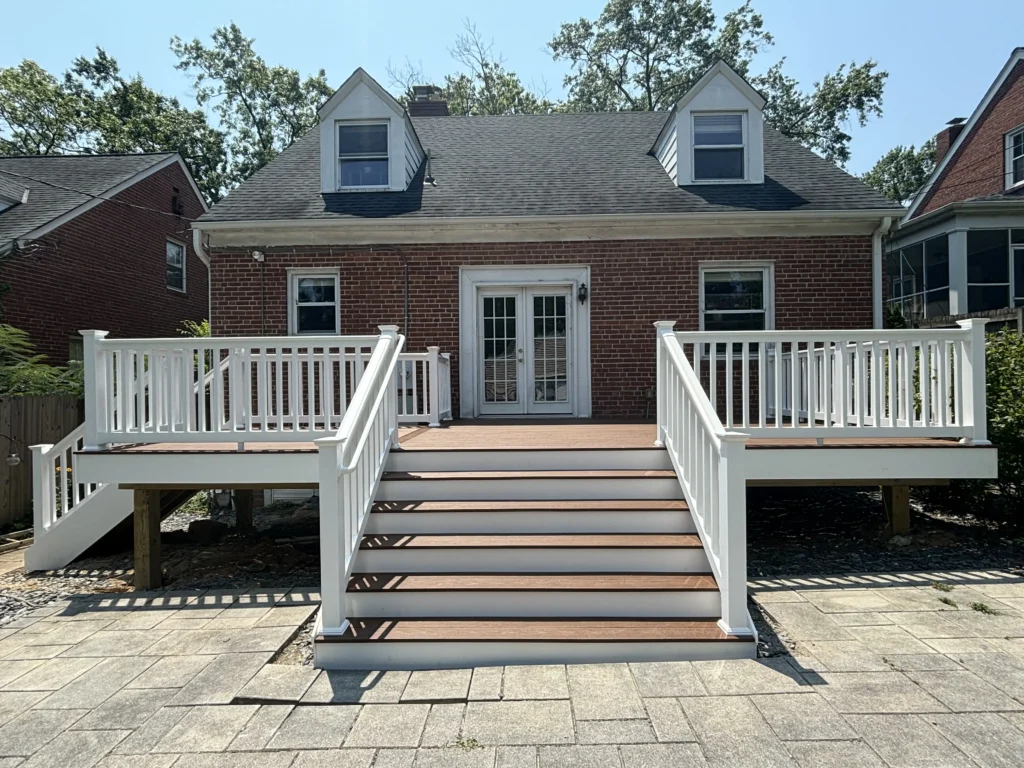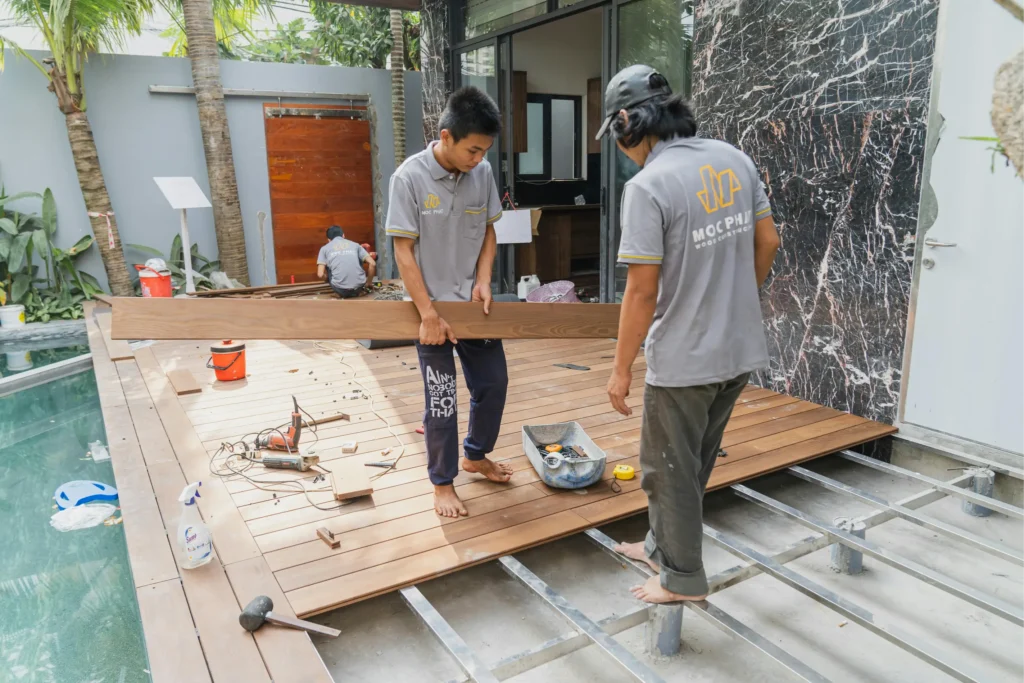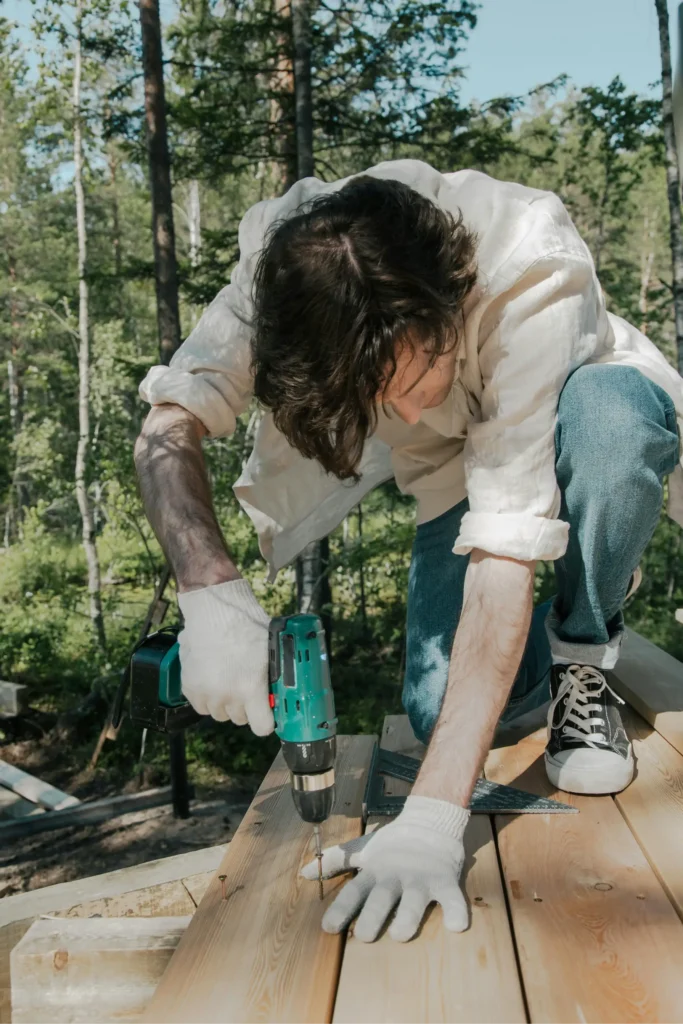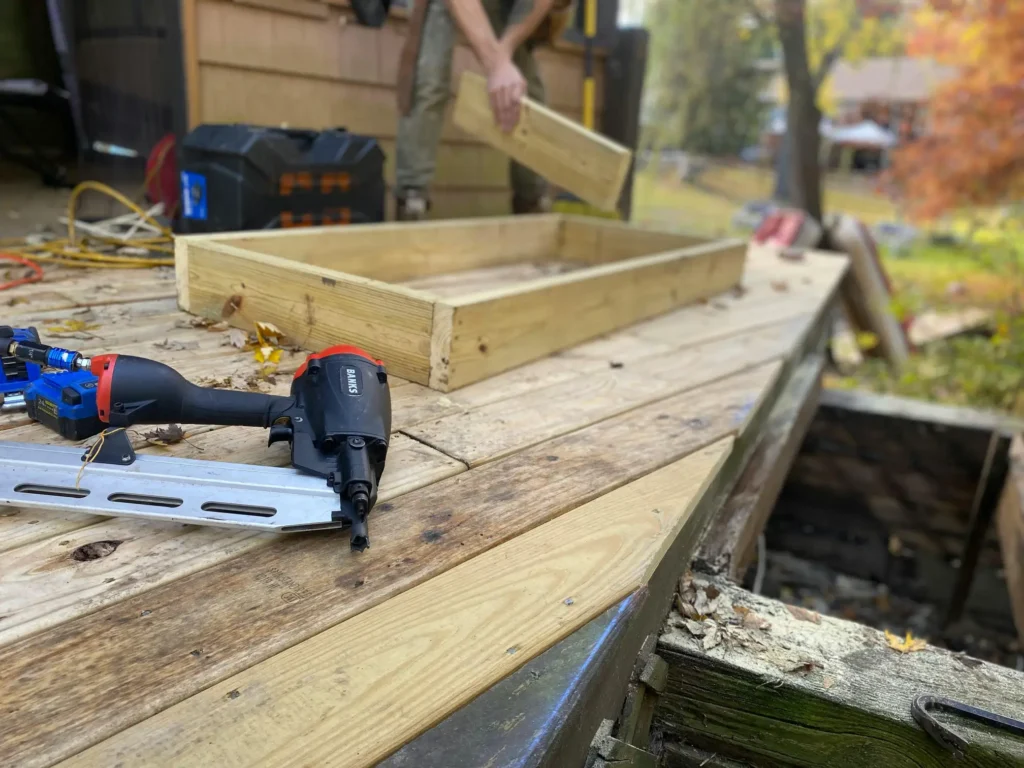
Building your own deck can feel like a huge project at first, but it’s also one of the most satisfying things you can do for your home. A deck creates a space where you can relax after work, host family dinners, or enjoy a sunny afternoon with friends. It adds beauty and value to your house, but more importantly, it gives you a place to make memories. The best part is that with the right plan and a bit of patience, you can build your own dream deck.
Here are some of the best deck building tips shared by experts to help you get started the right way. From planning and choosing the right materials to setting a strong foundation and adding finishing touches, you’ll learn the basics in simple language almost like following a clear deck construction guide. By the end, you’ll feel confident enough to start your own project with the right deck building tips and tricks in mind.
Also Read: Do You Really Need a Double Rim Joist for Your Deck?
Pro Deck Building Tips For Richmond Homeowners
If you’re thinking about adding a deck to your Richmond home, a few smart tips can save you a lot of time and stress. The right approach helps you build something sturdy, safe, and ready to enjoy with family and friends.
Plan Before You Build

Before you pick up a hammer, take a little time to plan things out. Think about how you want to use your deck, what your budget looks like, and the style you’d love to see in your backyard. A clear plan makes the whole job much easier.
Research and Gather Inspiration
Every successful project starts with an idea. Before you grab a hammer, take time to look at different deck designs. You can scroll through photos online, visit a neighbor’s backyard, or even walk through a home improvement store. Notice which designs catch your eye. Some people love large decks with plenty of space for a dining table and grill. Others prefer small, cozy decks for reading and coffee.
Think about how you will use your deck which is important. If you plan to host parties, make sure there is enough room for guests to move comfortably. If your goal is quiet mornings, a simple design with a chair and table may be all you need. When you have a clear vision, it’s easier to make smart choices later.
Check Local Building Codes and Permits
Once you have a design in mind, you need to make sure it follows the rules in your area. Most towns or cities require a permit before you start building, especially if the deck is raised off the ground. In Richmond, you need a permit for most deck projects. The local office will look at things like railing height, footing depth, and overall safety. This step makes sure your deck is strong, safe to use, and built according to Richmond’s rules. Skipping this step can cause serious problems.
Assess Property Layout and Grading
The spot where you build your deck matters just as much as the design. Look at your yard carefully. Is the ground level, or does it slope? Does water drain away from the house, or does it pool near the foundation? Poor drainage can damage both your home and your deck.
It’s better to fix small problems in the ground before you build. If the soil is uneven or water stays near your house, your deck can get damaged later. You can level the soil, add gravel to help water drain, or make the ground slope away from the house. These small steps protect your deck and save you from big repairs in the future.
Design a Deck That Fits Your Lifestyle
A good deck is not only about looks, it should match your lifestyle. Do you need stairs that go into the garden? Should the railings be safe for kids? Would built-in benches make it easier for guests to sit and relax? Try sketching your ideas on paper or use a free design tool online. Even a simple drawing helps you picture the deck and spot problems early. Following simple deck building tips during design saves you stress and mistakes later.
Choose the Right Deck Materials

Treated Wood Options
One of the most common choices for decks is pressure-treated wood. It’s strong, affordable, and widely available. Many beginners choose this material because it’s easy to work with. The downside is that it requires regular sealing and staining to protect it from moisture. If you don’t mind a little yearly maintenance, treated wood can last for decades.
Composite Decking
Composite boards are made from a mix of wood fibers and plastic. They cost more upfront, but they require very little maintenance. Unlike wood, they don’t rot or warp, and many brands come with warranties of 20 years or more. If you’d rather build once and not worry about constant upkeep, composite is a smart investment.
Cedar and Natural Wood
Cedar is another popular choice because it’s naturally resistant to rot and insects. Its warm color gives decks a beautiful, natural look. However, cedar costs more than treated wood, and it still benefits from sealing to keep it strong. If you want a deck that feels timeless and are willing to invest a little more, cedar may be the right pick. Fiber cement is sometimes used under floors or siding, but it is not a common choice for deck surfaces because it can crack under heavy weight
Fasteners and Hidden Deck Clips
One of the most overlooked deck building tips is to pay attention to screws and fasteners because they are what keep the whole deck together. Low-quality screws can rust, snap, or loosen over time, which weakens your structure. Always choose coated or stainless steel fasteners. If you prefer a clean look, hidden deck clips are a great option. They secure boards without visible screw heads, leaving your deck surface smooth and safe.
Invest in Premium-Quality Screws
Cheap screws may save money at first, but they will cost more in the long run. They rust quickly, stain your boards, and weaken your frame. Premium screws, especially stainless steel, last longer and keep your deck safe. Think of them as small details that make a big difference.
Build a Strong Foundation

Setting Posts and Piers
Any good deck construction guide will remind you that the foundation is what makes your deck last. Posts are the vertical supports that hold up the entire structure, and piers are what anchor those posts into the ground. If the posts aren’t set correctly, your deck will wobble or shift. Place posts evenly and secure them with brackets or anchors. Remember, a deck is only as strong as what holds it up.
Poured Concrete Piers for Stability
Concrete piers are the most reliable choice for raised decks. They go deep into the ground, past the frost line, so the deck won’t move when the ground freezes and thaws. After the concrete hardens, attach post bases with anchor bolts. This connection keeps everything stable for years.
Beams and Joists Placement
Beams and joists are key deck building parts that create the skeleton of your deck. Beams run horizontally and carry the main weight, while joists run across them and support the decking boards. The usual spacing between joists is 16 inches, but some decking materials require 12 inches. Follow local codes and the instructions of your decking manufacturer. Spending a little more time and money on proper spacing will prevent sagging and make your deck feel solid underfoot.
Begin With a Solid, Level Base
Always check that your foundation is level. A tilted deck not only looks bad but can also be unsafe. Use a carpenter’s level often while setting posts and beams. Fixing unevenness later is far harder than getting it right in the beginning.
Deck Building Tips for Installing Features

Railings for Safety and Style
Railings protect people from falling and add character to your deck. You can choose from wood, metal, glass, or even cable designs. Whatever style you pick, make sure the posts are tied securely into the frame before you install the boards. Strong railings are especially important if children or older family members will use the deck. Don’t think of them as decoration, think of them as protection. If you are worrying about how high a deck railing should be? Well Building codes usually require deck railings to be about 36 to 42 inches high, depending on where you live
Deck Board Spacing and Alignment
Boards need small gaps between them. Without gaps, water will pool on the surface, leading to rot. With gaps, rain drains away, keeping the deck drier. You can use spacers or even the width of a screw head to keep the spacing consistent.It’s one of the most useful deck building tips to start straight from the first board, because even a tiny mistake in the beginning will grow larger across the deck
DIY Stair Stringers for Safe Access
If your deck has stairs, stringers are the angled supports that hold each step. They must be cut carefully to make the stairs safe and even. Use a framing square and measure twice before cutting. Safety is one of the most important deck building tip get your stairs and stringers right.
Install a Level Deck Edger
A ledger board connects the deck to your house, while an edger ties the frame together. If you are attaching your deck to your home, always use flashing tape behind the ledger to stop water from seeping into your walls. A strong, level edger keeps everything aligned and prevents shifting over time.
Also Read: Deck Lighting Ideas for Richmond Homes
Safety Tips Every Deck Builder Should Follow
Wear Eye and Respiratory Protection
When cutting wood or mixing concrete, wear safety glasses and a dust mask. Wood chips and dust may seem harmless, but they can injure your eyes or lungs. Simple gear can prevent serious harm.
Electrical Safety Considerations
Many deck projects require power tools. Always plug them into GFCI-protected outlets, which shut off power if something goes wrong. Avoid using damaged cords, and keep them away from wet areas.
Proper Tool Usage and Handling
Know your tools before you start. A circular saw, drill, or impact driver may seem easy, but each has safety features you should learn. Keep blades sharp, check cords, and never rush while using them.
Ensure Structure
Before calling your deck finished, check the frame carefully. Are the screws tight? Are beams well-supported? Small mistakes can lead to big problems once people start walking on the deck. Most decks are designed to hold about 50 pounds per square foot, which covers people, furniture, and even a grill.
Maintain a Clean Workspace
Keep tools and scraps out of walkways. A cluttered worksite increases the chance of tripping or stepping on nails. Clean as you go it keeps you safe and makes work easier.
Tips to Keep Your Deck Strong and Beautiful
Lighting Options for Decks
Lighting makes your deck useful at night and adds charm. You can install solar lights along the railings or LED strips under stairs. This not only looks good but also keeps your family safe when moving around in the dark.
Natural Wood Finishing Oils and Stains
If you use wood, protect it with oil or stain. These products block moisture and slow down rot. They also bring out the natural beauty of the grain. Choose eco-friendly products when possible. They are safer for your family and pets.
Protecting Decks From Weather
Rain, sun, and snow slowly damage wood. Use joist tape to protect hidden parts of the structure, sweep off leaves to stop mold, and reseal boards every few years. With proper sealing and care, a wood deck can last 15 to 20 years, while well-maintained cedar or composite options may last even longer.
Explore: Best Deck Joist Tape Alternatives
When to Talk to a Professional
Doing it yourself works fine for small and simple decks, but some projects are more complex. If your deck is very large, built on a hillside, or needs special foundations, it can get tricky fast. Mistakes in these cases can be costly and even unsafe. If you live in Richmond, LHC Services can help with a Deck building project in Richmond. Our team knows the local building codes, soil conditions, and safety rules. We can review your plan, handle the tough parts of construction, or even take on the full build if you prefer.
Conclusion
Building your own deck may take time and effort, but the reward is worth it. With planning, safe practices, and the right materials, you can create a space that feels like an extension of your home. Imagine the pride of stepping onto your deck and knowing you built it with your own hands. That pride lasts just as long as the deck itself.
